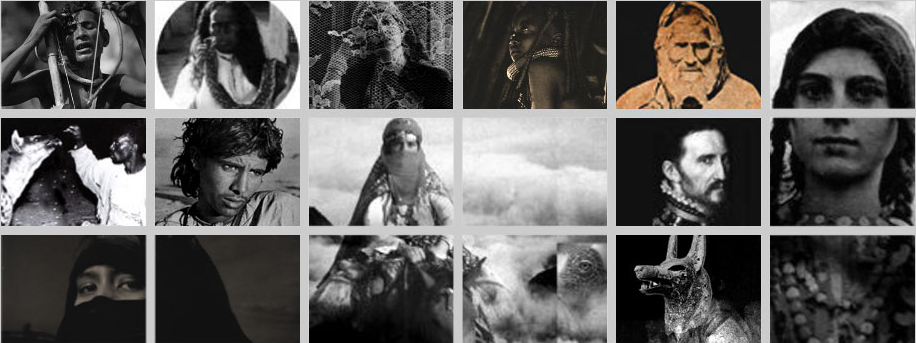
XÁMZA (häm'zä)*
XÁMZA takes place in a distant time when Moslems and Jews lived together in peace. It is a fantasy. It tells the story of Amaris Dahia, who, it is said, traveled between worlds. Between the animal and the human. Between danger and enchantment. Between revelation and delusion. Between the caves of Al-Andaluz and the sands of the Zahara. Between the Chamber of the Beasts and the Kingdom of the Jackal.
XÁMZA illuminates a little-known world of lost desert kingdoms, harems, mystical rituals, and intimate secrets of life, death and the possibility of redemption.
XÁMZA is a fantasy grounded in reality. At the center of the story is Dahia el Kahina. Although there is some dispute, she is often described as a Jewish Berber Warrior Queen known as the Malkat Ifriqiya, the Queen of Africa, who lived in the Aures Mountains of Algeria in the 7th Century. When Arab armies first invaded North Africa, she successfully fought them off for seven years, before being captured and beheaded. Today she stands as a symbol of anti-colonialism. Kahina means prophetess in Arabic. It is also possible that Kahina derives from Kohen, the ancient priestly class in Jerusalem, descended from the biblical Aaron, brother of Moses.
Then there is, Louar, the One-Eyed Jackal (Louar means, the One-Eyed One). He is named after a very real one-eyed bandit who roamed the Zahara in a Land Rover. Michal Palin mentions him in his Zaharan travelogue. His name was Mokhtar Belmokhtar an Algerian leader of the group Al-Murabitoun, and former military commander of Al-Qaeda in the Maghreb. He was killed in a U.S. air strike inside Libya, in 2015. In XÁMZA, Louar is a tragic figure, not an evil one.
I have written XÁMZA, in part, because of how little we in the West know of a world that has thrust itself upon us--whether we like it or not. My hope is that XÁMZA opens a small window of understanding between East and West--while, at the same time, being an exciting work of the imagination.
XÁMZA has been conceived as both a novel and a book of fine arts photography. The photographs depict actual characters in the story. They are drawn from contemporary photographers and archival sources. They give weight to the reality of North Africa--a land steeped in magic and beauty.
Albert Louis Greenberg
*Xámza: An amulet common to Arabs, Jews, Berbers and Gypsies. It is used as a protection against the evil eye.
All rights reserved 2008 Albert Louis Greenberg